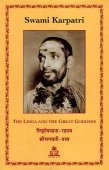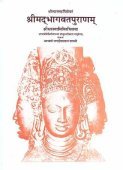Sannyasin, Saṃnyāsin, Sannyāsin, Saṃnyāsī, Samnyasin, Samnyasi: 15 definitions
Introduction:
Sannyasin means something in Hinduism, Sanskrit, Hindi. If you want to know the exact meaning, history, etymology or English translation of this term then check out the descriptions on this page. Add your comment or reference to a book if you want to contribute to this summary article.
In Hinduism
Dharmashastra (religious law)
Source: Shodhganga: The saurapurana - a critical study (dharma)Sannyāsin (सन्न्यासिन्) or Sannyāsa refers to the fourth of the four “stages of life” (aśrama), according to the 10th century Saurapurāṇa: one of the various Upapurāṇas depicting Śaivism.—From the times of the most ancient dharmaśāstras the number of āśramas has been four:—Brahmacarya, Gṛhastha, Vānaprastha and Sannyāsin.—After spending the third part of his life in the forest for some times he spends the rest of his life as a Sannyāsin (sannyāsa). This is a stage of transition from the life of a householder to that of the Sannyāsin; and it is a period of probation entitling one to enter a state of complete renunciation.

Dharmashastra (धर्मशास्त्र, dharmaśāstra) contains the instructions (shastra) regarding religious conduct of livelihood (dharma), ceremonies, jurisprudence (study of law) and more. It is categorized as smriti, an important and authoritative selection of books dealing with the Hindu lifestyle.
Shaivism (Shaiva philosophy)
Source: Brill: Śaivism and the Tantric TraditionsSaṃnyāsin (संन्यासिन्) refers to “renouncers”, according to the Jayadrathayāmala, Ṣaṭka 1 verse 13.3–18::—Accordingly, “[...] [And], O Goddess, [the Śivadharmadīkṣā] has two forms: in Śaiva scriptures the division of initiation is called that without the seed and that with the seed. The Ācārya performs the [initiation] which contains the duty to perform post-initiatory rites purified for children, imbeciles, those whose limbs suffered trauma, deaf people, women, people who are suffering from chronic illness and kings and renouncers (saṃnyāsin) who are extremely devoted [to Śiva]; this [initiation] is the nirbījā. [...]”.
Source: HAL: The function of the Vṛṣasārasaṃgraha in the Śivadharma corpusSaṃnyāsī (संन्यासी) refers to one of the Six Āśramas referred to by Kauṇḍinya in his comments on Pāśupatasūtra 3.1.—The system of the four Brahmanical Āśramas also survived practically intact during the time of the Tantric and non-Tantric manifestations of Śaivism and Vaiṣṇavism The editor of the Trivandrum edition of the Pāśupatasūtra gives a list in explanation of the phrase ‘Six Āśramas’ [e.g., Saṃnyāsī]. This interpretation is probably based on Kauṇḍinya ad Pāśupatasūtra 1.6 and 4.18 (“the paths of the householder, the chaste student, the forest-dweller, the mendicant, and the heretic are wrong paths”).

Shaiva (शैव, śaiva) or Shaivism (śaivism) represents a tradition of Hinduism worshiping Shiva as the supreme being. Closely related to Shaktism, Shaiva literature includes a range of scriptures, including Tantras, while the root of this tradition may be traced back to the ancient Vedas.
Pancaratra (worship of Nārāyaṇa)
Source: archive.org: Catalogue of Pancaratra Agama TextsSannyāsin (सन्न्यासिन्) is another name for Yati—a group of initiates (initiated by cakramaṇḍala) which has four subdivisions, as discussed in chapter 5 of the Brahmarātra section of the Sanatkumārasaṃhitā: an encyclopedic Sanskrit text written in over 3500 verses dealing with a variety of topics such as yoga, temple-building, consecration ceremonies, initiation and dhanurveda (martial arts).—Description of the chapter [varṇa-ācāra-vidhi]: [...] The initiates who are known as Yatis (=Bhikṣukas; Sannyāsins) have four subdivisions, namely: Haṃsas, Paramahaṃsas, Bhagavāns and Prabhus.

Pancaratra (पाञ्चरात्र, pāñcarātra) represents a tradition of Hinduism where Narayana is revered and worshipped. Closeley related to Vaishnavism, the Pancaratra literature includes various Agamas and tantras incorporating many Vaishnava philosophies.
Languages of India and abroad
Sanskrit dictionary
Source: DDSA: The practical Sanskrit-English dictionarySaṃnyāsin (संन्यासिन्).—m.
1) One who lays down or deposits.
2) One who abandons, gives up; सर्वसंकल्पसंन्यासी योगा- रूढस्तदोच्यते (sarvasaṃkalpasaṃnyāsī yogā- rūḍhastadocyate) Bhagavadgītā (Bombay) 6.4.
3) One who completely renounces the world and its attachments, an ascetic, a Brāhmaṇa in the fourth order of his religious life; ज्ञेयः स नित्य- संन्यासी यो न द्वेष्टि न काङ्क्षति (jñeyaḥ sa nitya- saṃnyāsī yo na dveṣṭi na kāṅkṣati) Bhagavadgītā (Bombay) 5.3.
4) One who abstains from food (tyaktāhāra); उवाच मारुर्वृद्धे संन्यासिन्यत्र वानरान् (uvāca mārurvṛddhe saṃnyāsinyatra vānarān) Bhaṭṭikāvya 7.76.
Source: Cologne Digital Sanskrit Dictionaries: Shabda-Sagara Sanskrit-English DictionarySannyāsin (सन्न्यासिन्).—m. (-sī) 1. The Brahman of the fourth order, the religious mendicant. 2. An ascetic, a devotee. 3. One who lays down or deposits. E. sannyāsa abandonment of the world, ini aff.
Source: Cologne Digital Sanskrit Dictionaries: Benfey Sanskrit-English DictionarySaṃnyāsin (संन्यासिन्).—i. e. saṃnyāsa + in, m. 1. One who has abandoned all worldly affections, etc. (see saṃnyāsa), [Bhagavadgītā, (ed. Schlegel.)] 5, 3; [Lassen, Anthologia Sanskritica.] 48, 15. 2. The Brāhmaṇa of the fourth order, the religious mendicant. 3. An ascetic.
Source: Cologne Digital Sanskrit Dictionaries: Cappeller Sanskrit-English DictionarySaṃnyāsin (संन्यासिन्).—[adjective] renouncing, resigning (—°); [absolutely] who has abandoned the world.
Source: Cologne Digital Sanskrit Dictionaries: Monier-Williams Sanskrit-English Dictionary1) Saṃnyāsin (संन्यासिन्):—[=saṃ-nyāsin] [from saṃny-as] mfn. laying aside, giving up, abandoning, renouncing, [Aṣṭāvakra-saṃhitā]
2) [v.s. ...] abstaining from food, [Bhaṭṭi-kāvya]
3) [v.s. ...] m. one who abandons or resigns worldly affairs, an ascetic, devotee (who has renounced all earthly concerns and devotes himself, to meditation and the study of the Āraṇyakas or Upaniṣadas, a Brāhman in the fourth Āśrama q.v. or stage of his life, a religious mendicant; cf. [Religious Thought and Life in India 53, 55 etc.]), [Upaniṣad; Mahābhārata; Purāṇa]
Source: Cologne Digital Sanskrit Dictionaries: Yates Sanskrit-English DictionarySannyāsin (सन्न्यासिन्):—(sī) 5. m. The Brāhman of the fourth order; a religious mendicant, a devotee.
Source: DDSA: Paia-sadda-mahannavo; a comprehensive Prakrit Hindi dictionary (S)Saṃnyāsin (संन्यासिन्) in the Sanskrit language is related to the Prakrit word: Saṃṇāsi.
[Sanskrit to German]
Sanskrit, also spelled संस्कृतम् (saṃskṛtam), is an ancient language of India commonly seen as the grandmother of the Indo-European language family (even English!). Closely allied with Prakrit and Pali, Sanskrit is more exhaustive in both grammar and terms and has the most extensive collection of literature in the world, greatly surpassing its sister-languages Greek and Latin.
Hindi dictionary
Source: DDSA: A practical Hindi-English dictionarySaṃnyāsī (संन्यासी) [Also spelled sanyasi]:—(nm) an anchorite; an ascetic, a monk; one who has renounced the world; hence ~[sina] fem. form.
...
Kannada-English dictionary
Source: Alar: Kannada-English corpusSaṃnyāsi (ಸಂನ್ಯಾಸಿ):—[noun] a man who is not influenced by personal interest, selfish motives, sensual enjoyments, worldly possessions, etc.; he who has renounced everything and is leading an ascetic life, for religious purpose.
Kannada is a Dravidian language (as opposed to the Indo-European language family) mainly spoken in the southwestern region of India.
Nepali dictionary
Source: unoes: Nepali-English DictionarySaṃnyāsī (संन्यासी):—adj. → सन्यासी [sanyāsī]
Nepali is the primary language of the Nepalese people counting almost 20 million native speakers. The country of Nepal is situated in the Himalaya mountain range to the north of India.
See also (Relevant definitions)
Partial matches: De, Te, Sam, Cam, Nyasin, Sannyasin.
Starts with: Sannyasini.
Query error!
Full-text (+77): Samnyasisamdhya, Samnyasisamaradhana, Arthasamnyasin, Nityasamnyasin, Samnyasidarshana, Samnyasita, Samnyasitva, Shivarama samnyasin, Sanyasi, Karmasamnyasin, Samnyasika, Vedasamnyasin, Ashrama, Pariviracakan, Samnasi, Ashtamargas, Parityagin, Pancamashramavidhi, Dandagrahana, Parirakshika.
Relevant text
Search found 82 books and stories containing Sannyasin, Saṃnyāsin, Sannyāsin, Samnyāsi, Saṃnyāsi, Sam-nyasin, Saṃnyāsī, Saṃ-nyāsin, Samnyasin, Samnyasi, Sannyasins, The sannyasin, De sannyasin, Sannyasinit; (plurals include: Sannyasins, Saṃnyāsins, Sannyāsins, Samnyāsis, Saṃnyāsis, nyasins, Saṃnyāsīs, nyāsins, Samnyasins, Samnyasis, Sannyasinses, The sannyasins, De sannyasins, Sannyasinits). You can also click to the full overview containing English textual excerpts. Below are direct links for the most relevant articles:
Taittiriya Upanishad Bhashya Vartika (by R. Balasubramanian)
Verse 2.426-427 < [Book 2 - Brahmavallī]
Verse 3.90-91 < [Book 3 - Bhṛguvallī]
Verse 3.89 < [Book 3 - Bhṛguvallī]
Yoga-sutra with Bhashya Vivarana (study) (by Susmi Sabu)
Some conclusive remarks on the author < [Chapter 5 - Observations]
Notes and References for chapter 5 < [Chapter 5 - Observations]
The concluding sentence—the key to open the problem casket < [Chapter 3 - The Authorship Problem of Patanjala-yogasutra-bhashya-vivarana]
Bhagavatpadabhyudaya by Lakshmana Suri (study) (by Lathika M. P.)
Canto VI—Meeting with Sureśvara < [Chapter 2 - Content Analysis of Bhagavatpādābhyudaya]
Canto V—The Blessing of Vyāsa < [Chapter 2 - Content Analysis of Bhagavatpādābhyudaya]
Maṭhas founded by Śaṅkara < [Chapter 4 - Similarities and Dissimilarities]
Samkhya thoughts in the Mahabharata (by Shini M.V.)
Hārīta-gītā (Summary) < [Chapter 3 - The Philosophical Tenets in the Śānti-parva]
Bhakti-rasayana by Madhusudana Sarasvati (by Lance Edward Nelson)
Part 7 - Madhusudana's Final Intention < [Chapter 9 - The continuity of Madhusudana’s thought on Bhakti]
Part 2 - Chaitanya and Shridhara < [Chapter 4 - Bengal Vaishnava concept of Bhakti]
Part 3.5 - Devotion for the Renunciate < [Chapter 9 - The continuity of Madhusudana’s thought on Bhakti]
Chandogya Upanishad (Madhva commentary) (by Srisa Chandra Vasu)
Related products

